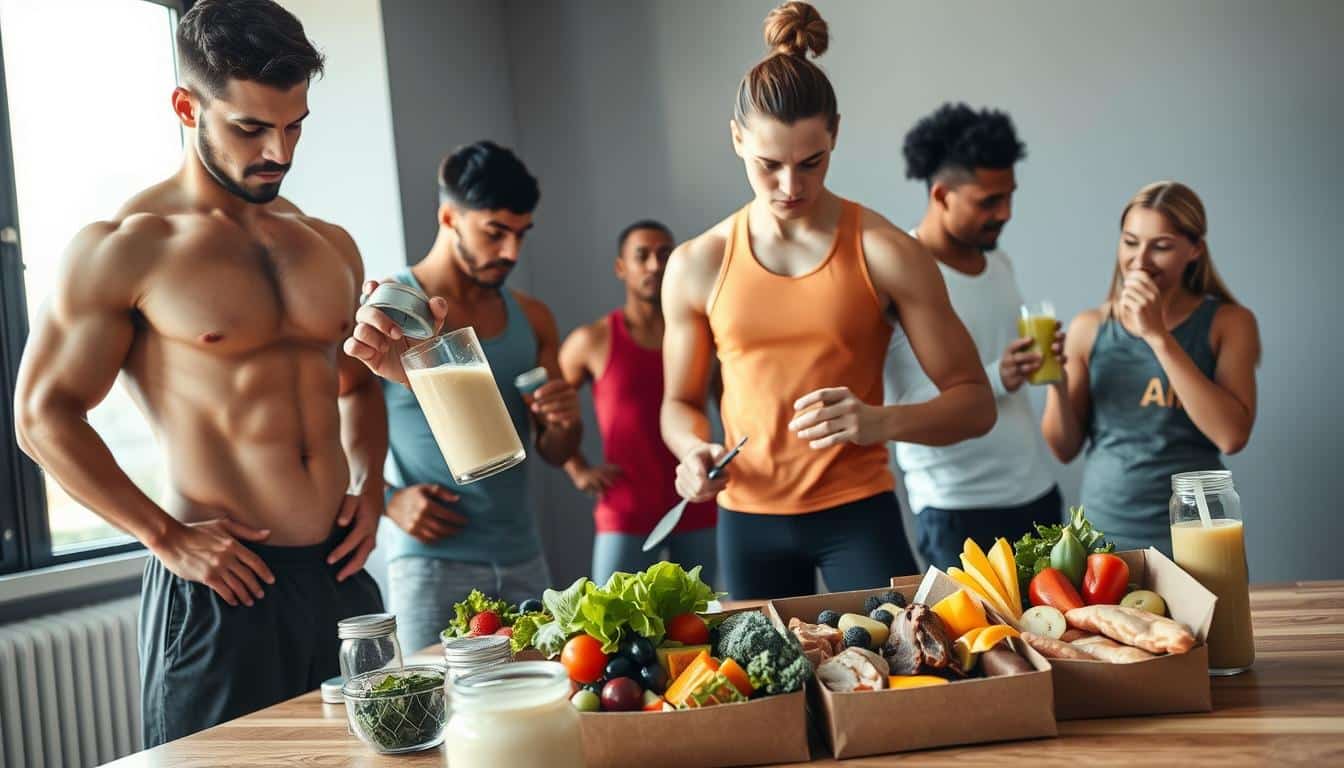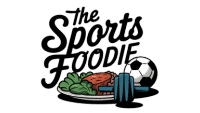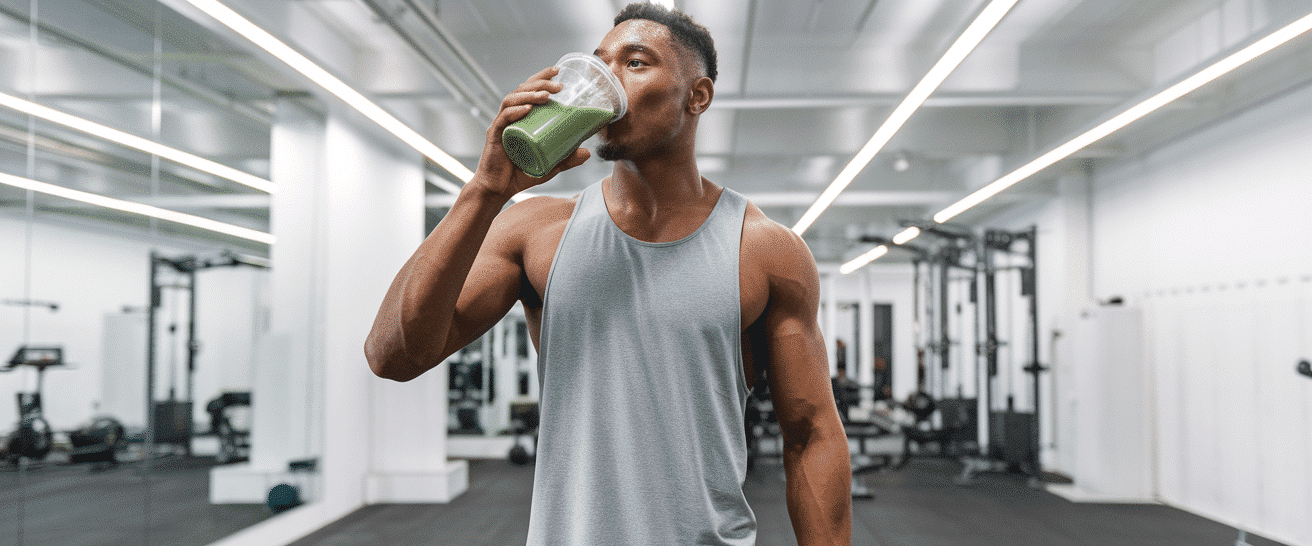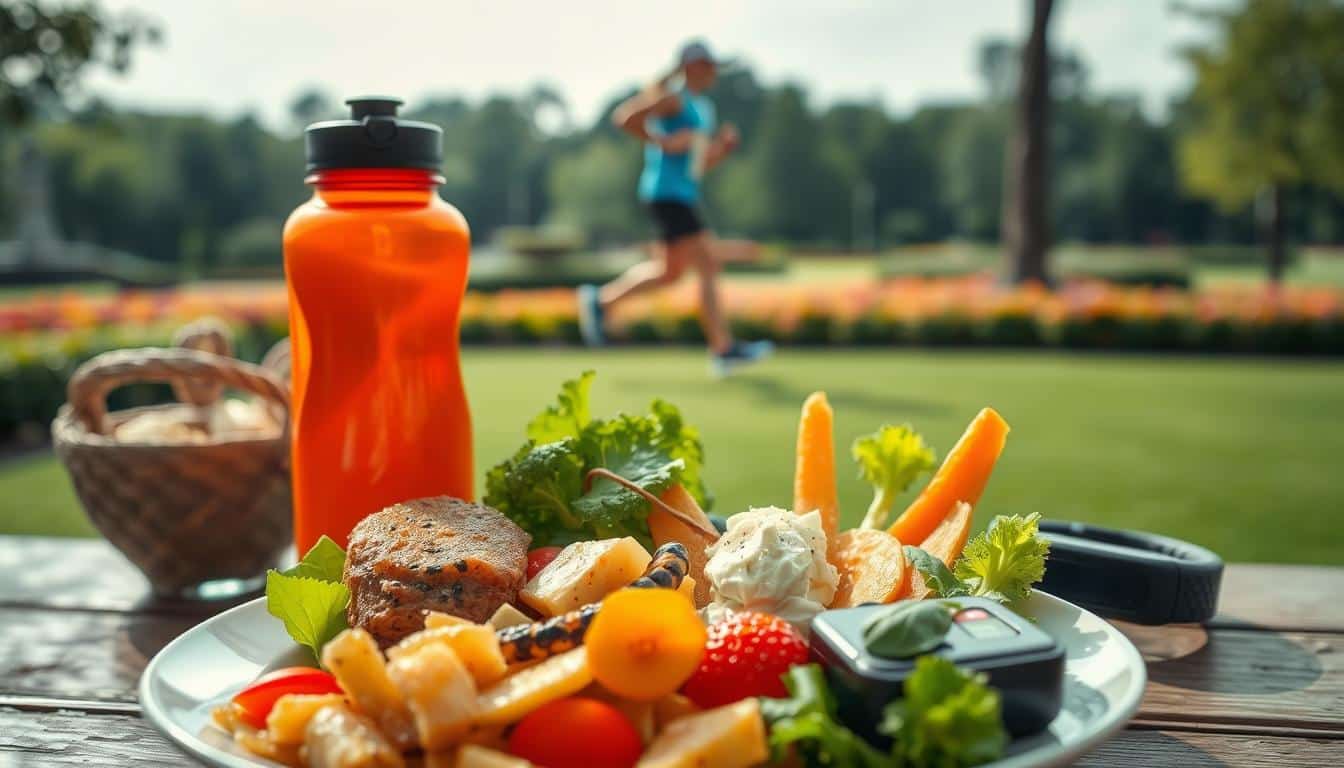Ever wonder why some athletes seem to have endless stamina while others hit a wall mid-workout? The secret often lies in how they fuel their bodies. Strategic eating plays a crucial role in managing energy levels, boosting stamina, and speeding up recovery.
Research shows that timing your meals can make a big difference. Whether you’re a casual gym-goer or a pro, understanding this concept can transform your results. From pre-workout snacks to post-training recovery, it’s all about smart choices.
In this guide, we’ll dive into practical strategies backed by sports nutrition science. You’ll learn how to optimize your eating habits to match your goals. Ready to take your game to the next level? Let’s get started!
Why Meal Frequency Matters for Athletes
What separates top athletes from the rest often comes down to how they fuel their bodies. Research from Johns Hopkins shows that during competition, athletes burn calories 40% faster than non-athletes. This means their energy needs are significantly higher.
For example, an office worker might need 2,000 calories a day, while a marathon runner could require 3,500 or more. Underfueling can lead to serious issues like REDs (Relative Energy Deficiency in Sports). This condition harms both physical and mental health, making it harder to perform at your best.

Hydration also plays a key role. As Rayven Nairn points out, staying hydrated helps regulate body temperature during intense activity. This is especially important in sports like wrestling, where weight management is a constant challenge.
Poor timing can have immediate consequences. You might feel sluggish, lose focus, or even risk injury. For athletes, every second counts, so fueling correctly is non-negotiable.
By understanding these needs, you can optimize your nutrition and stay at the top of your game. Your body deserves the best fuel to keep you healthy and strong.
The Science Behind Meal Timing
Ever thought about how your body powers through a tough workout? It all comes down to how you use energy. Understanding this process can help you perform better and recover faster.
How the Body Uses Energy During Exercise
When you move, your body converts food into fuel. This fuel powers your muscles, helping you push through each rep or mile. Think of it like a car engine—your body needs the right type of fuel to run smoothly.
During exercise, your muscles rely on two main systems: aerobic and anaerobic. Aerobic uses oxygen for long-lasting activities like running. Anaerobic works without oxygen for short bursts, like sprinting.
The Role of Glycogen Stores
Your body stores carbohydrates as glycogen in your muscles and liver. These stores are your go-to fuel during intense activity. For example, during a 90-minute soccer match, glycogen levels can drop by 50% or more.
When glycogen runs low, you might “hit the wall.” Cyclists often experience this around mile 18. To avoid this, endurance athletes need 8-12g of carbs per kg of body weight daily, according to Ohio State research.
Fast-twitch muscles use glycogen quickly for explosive moves. Slow-twitch muscles burn it slowly for endurance. Knowing this helps you plan your fueling strategy.
Benefits of Eating Smaller, Frequent Meals
Small changes in how you eat can lead to big improvements in how you feel. Eating smaller portions more often keeps your energy steady throughout the day. It also helps your body recover faster after workouts.
Improved Energy Levels
When you eat every 3-4 hours, your blood sugar stays stable. This prevents the “bonk” phenomenon, where you suddenly feel drained. Grazers—people who eat small, frequent meals—have smoother energy curves compared to feasters.
For example, a UCLA study found that frequent eaters had 23% faster muscle repair. This is because their bodies had a steady supply of nutrients to work with.
Enhanced Muscle Repair
Eating smaller meals with protein boosts mTOR activation, a key process for muscle recovery. Snacks like rice cakes with turkey slices provide 20g of protein, perfect for this purpose.
Here are five portable snack combos to try:
- Greek yogurt with berries
- Almond butter on whole-grain toast
- Hard-boiled eggs with avocado
- Hummus with carrot sticks
- Cheese sticks with apple slices
These options keep your energy levels up and support muscle repair throughout the day.
When to Eat Larger Meals
Fueling your body at the right time is just as important as what you eat. Larger meals can provide the energy and nutrients you need for peak performance. Whether it’s before a big event or after intense training, timing matters.
Pre-Competition Meals
Your pre-event meal sets the stage for success. According to Johns Hopkins, it should be 50% carbs, 25% protein, and 25% veggies. This balance ensures steady energy and avoids digestive discomfort.
For example, a 175-pound linebacker might need a 600-calorie pre-game meal. Here’s a sample plan:
- 2 cups of cooked quinoa (carbs)
- 6 oz grilled chicken breast (protein)
- 1 cup steamed broccoli (veggies)
Digestion time varies by food. A steak takes about 4 hours, while salmon digests in 2. Choose wisely based on your schedule.
Post-Workout Recovery
After intense training, your body needs fuel to repair and rebuild. A smoothie can be a great option, especially for sensitive stomachs. Mass General Brigham recommends blending:
- 1 banana
- 1 cup almond milk
- 1 scoop protein powder
- 1 tbsp peanut butter
For a post-lift meal, focus on maximizing protein synthesis. Include:
- Grilled salmon or chicken
- Sweet potatoes or brown rice
- Leafy greens like spinach or kale
Avoid “see-food diets,” where you eat everything in sight. This approach can lead to poor nutrient balance and sluggishness.
| Food | Digestion Time (hours) |
|---|---|
| Steak | 4 |
| Salmon | 2 |
Tailoring Meal Frequency to Your Sport
Different sports demand unique fueling strategies to keep you at your best. Whether you’re running a marathon or lifting heavy weights, your body’s needs vary. Understanding these differences can help you optimize your nutrition for peak results.
Endurance Sports
For endurance athletes, like marathoners or triathletes, carbohydrates are key. Rutgers research shows they need 30-60g of carbs per hour during races. This keeps energy levels steady and prevents hitting the wall.
Eliud Kipchoge, the marathon world record holder, relies on carb-loading before big events. His strategy includes meals like pasta and rice to maximize glycogen stores. Hydration is also critical, especially during long races like a 100-mile bike ride. A good plan includes water and electrolytes every 15-20 minutes.
Strength Training
Strength athletes, like powerlifters or bodybuilders, focus on protein for muscle repair. LeBron James, for example, eats seven smaller meals a day to fuel his intense training. This approach ensures a steady supply of nutrients for recovery and growth.
Intra-workout BCAA dosing is popular among bodybuilders. It helps reduce muscle breakdown during heavy lifting. Common mistakes include skipping meals or eating too close to workouts, which can lead to sluggishness.
- Triathletes eat every 2-3 hours during races, while powerlifters prefer larger meals with protein-rich snacks.
- CrossFit athletes often make the mistake of not timing their meals properly, leading to energy crashes.
- Hydration and nutrition timelines are crucial for endurance events, while strength athletes focus on protein timing.
By tailoring your eating schedule to your sport, you can maximize your performance and recovery. Whether you’re an endurance athlete or a strength trainer, the right plan makes all the difference.
Hydration and Meal Timing
Proper hydration can make or break your game, no matter the sport. Water and electrolytes play a vital role in keeping your energy steady and your body functioning at its best. Whether you’re training or competing, timing your fluid intake is just as important as what you eat.
Fluid Intake Before Exercise
Start your day with a glass of water to kickstart hydration. Before exercise, aim to drink 16-20 ounces of fluids 2-3 hours beforehand. This gives your body time to absorb the water and prepare for the event ahead.
Check your hydration status using the urine color chart. Pale yellow means you’re well-hydrated, while darker shades signal the need for more fluids. Coconut water is a great alternative to sports drinks like Gatorade, especially for tennis players. It’s packed with natural electrolytes and lower in sugar.
Hydration During Competition
During intense activities, like football practice in the summer, athletes can lose up to 2.5 liters of fluid per hour. To stay hydrated, calculate your hourly water intake based on sweat rate. A simple formula is to weigh yourself before and after exercise. For every pound lost, drink 16-24 ounces of water.
Overhydration can be dangerous, especially in ultramarathons. Symptoms include nausea, confusion, and swelling. Balance your fluid intake with electrolytes to avoid these risks. Indoor sports, like basketball, require less hydration than outdoor sports, like soccer, due to lower sweat rates.
- Urine color chart: Pale yellow = hydrated, dark yellow = dehydrated.
- Coconut water: Natural electrolytes, low sugar.
- Overhydration dangers: Nausea, confusion, swelling.
- Hourly water intake: 16-24 ounces per pound lost.
- Indoor vs. outdoor sports: Adjust hydration based on sweat rate.
Foods to Avoid Before Exercise
Choosing the wrong foods before exercise can sabotage your workout. What you eat impacts your energy, digestion, and overall performance. Some options might seem healthy but can cause discomfort or even mid-run emergencies.
High-fat and high-fiber foods are the main culprits. Fried items, for example, delay gastric emptying by up to 45 minutes, according to an OSU study. This can leave you feeling sluggish and bloated during activity.
High-Fat Foods
Fatty foods take longer to digest, diverting blood flow away from your muscles. This can slow you down and increase the risk of cramps. Avoid items like:
- Cheeseburgers or fried chicken
- Heavy cream-based sauces
- Buttery pastries or desserts
High-Fiber Foods
While fiber is great for digestion, it’s not ideal before exercise. It can cause gas, bloating, or even runner’s diarrhea. Steer clear of:
- Beans and lentils
- Broccoli or cauliflower
- Whole-grain bread in large amounts
For a quick fix, try anti-bloat protocols like sipping peppermint tea or taking digestive enzymes. These can help ease discomfort and keep you focused on your workout.
Meal Frequency for Youth Athletes
Teen athletes have unique nutritional needs that set them apart from their peers. According to the CDC, they require 25% more calories than non-active teens to support their active lifestyles and growth. Proper fueling is essential for energy, recovery, and overall health.
Frequent Snacks for Growing Bodies
For young athletes, snacking isn’t just about curbing hunger—it’s about providing the right nutrients at the right time. Here’s a sample lunchbox for a 14-year-old soccer player:
- Turkey and cheese sandwich on whole-grain bread
- Carrot sticks with hummus
- Apple slices and a handful of almonds
- Water bottle with a splash of lemon
Why do Pop-Tarts beat kale chips for teen tournaments? Simple: they’re quick, easy, and packed with carbs for instant energy. While kale chips are healthy, they don’t provide the same fuel for high-intensity games.
Here are three growth-stunting meal patterns to avoid:
- Skipping breakfast before morning practice
- Overloading on sugary drinks instead of water
- Eating too close to bedtime, which disrupts sleep and recovery
After-school snacks are crucial for muscle development. Try these formulas:
- Greek yogurt with granola and honey
- Peanut butter and banana on whole-grain toast
- Smoothie with milk, frozen berries, and a scoop of protein powder
One warning: energy drinks have no place in high school locker rooms. They’re packed with caffeine and sugar, which can lead to crashes and dehydration. Stick to water or natural electrolyte drinks instead.
| Food | Digestion Time (hours) |
|---|---|
| Pop-Tarts | 1 |
| Greek Yogurt | 2 |
| Peanut Butter Toast | 3 |
For more healthy snack ideas, check out this guide to fueling your game.
Meal Frequency for Professional Athletes
Professional athletes have unique eating habits that set them apart from the rest. Their diet is tailored to meet extreme energy demands, ensuring they stay at the top of their game. From NFL linemen to Olympic swimmers, their fueling strategies are as diverse as their sports.
Take NFL linemen, for example. They consume over 6,000 calories daily, spread across 8 meals. This ensures they have enough energy to power through intense training and games. Similarly, Michael Phelps famously ate 12,000 calories during his peak training days, focusing on high-carb and protein-rich foods like pasta and eggs.
Balancing Heavy Meals and Snacks
For UFC fighters, recovery is key. After weigh-ins, many use IV drips to rehydrate quickly and replenish lost nutrients. This helps them regain strength before stepping into the octagon.
When it comes to travel, pros rely on portable snacks to stay fueled. Here are 5 pro-approved options:
- Trail mix with nuts and dried fruit
- Protein bars with minimal added sugar
- Bananas with almond butter
- Whole-grain crackers with cheese
- Greek yogurt with granola
Tom Brady’s anti-inflammatory meal timing rules are another game-changer. He avoids eating late at night and focuses on nutrient-dense foods like vegetables and lean proteins. This helps reduce inflammation and speeds up recovery.
Olympians also use caffeine strategically. They time their intake to match peak performance moments, like before a race or during a long event. This gives them the extra boost they need without overdoing it.
| Athlete | Calorie Intake | Key Strategy |
|---|---|---|
| NFL Lineman | 6,000+ | 8 meals daily |
| Michael Phelps | 12,000 | High-carb, protein-rich meals |
| UFC Fighter | Varies | IV drips post-weigh-in |
By adopting these strategies, you can fuel like a pro and take your game to the next level. Whether you’re an aspiring athlete or just looking to optimize your diet, these tips can make a big difference.
Signs You’re Not Fueling Correctly
Feeling off during training? It might be your fuel strategy. Even small mistakes in how you eat can lead to big drops in performance. Recognizing the signs early can help you make adjustments and stay on track.
According to the NCAA, 68% of college athletes experience symptoms of REDs (Relative Energy Deficiency in Sports). This condition can harm both physical and mental health, making it harder to perform at your best. Here’s how to spot the warning signs.
Fatigue and Weakness
If you’re constantly tired or struggling to finish workouts, it could be a sign of underfueling. Your body needs enough energy to power through intense activity. Without it, you might feel sluggish or lose focus.
Cortisol, the stress hormone, plays a role here. When you’re not eating enough, cortisol levels spike, leading to workout crashes. To avoid this, aim for balanced meals and snacks throughout the day.
Prolonged Muscle Soreness
Feeling sore for days after a workout? It might not just be the intensity of your training. Prolonged muscle soreness can signal a deficiency in key nutrients like protein or carbs.
Normal soreness fades within 48 hours. If it lasts longer, it’s time to reassess your diet. Focus on foods that support recovery, like lean proteins and whole grains.
Here are 7 hidden signs of underfueling to watch for:
- Brittle nails or hair loss
- Frequent headaches or dizziness
- Irritability or mood swings
- Slow recovery after workouts
- Persistent cravings for sugary foods
- Difficulty sleeping or poor sleep quality
- Low motivation or lack of focus
If you notice these red flags, consider consulting a sports dietitian. They can help you create a personalized plan to meet your needs. Start by keeping a 3-day food log to track your intake and identify gaps.
Remember, your body deserves the best fuel to keep you healthy and strong. Small changes can make a big difference in how you feel and perform.
Conclusion
Your journey to better performance starts with smart eating habits. Remember these three key rules: eat before workouts for energy, refuel after training for recovery, and stay hydrated throughout the day. These small changes can make a big difference in your health and results.
Start by implementing one or two strategies that fit your routine. Use tools like hydration calculators or meal planners to stay on track. Personalized nutrition is the key to unlocking your potential, so experiment and find what works best for you.
Ready to take the next step? Download our free recipe guide to fuel your training like a pro. Your body deserves the best—let’s make it happen!


